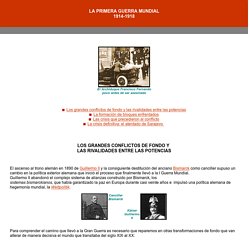

Evaluating Climate Change's Impact on Individuals and Ecosystems. Objective: Students will evaluate how communities rely on their ecosystems for survival and climate change's impact on their ability to do so.

They will examine text and photo stories about how the Meitei people of Manipur, India are affected by changes in the unique biome of Loktak Lake. Introducing the Reporting: Read the following introduction from “Loktak Wetland: Caught Between Development, Conflict, and Climate Change”: Loktak Lake is a unique wetland and is listed as a Wetland of International Importance through the Ramsar Convention. Phumdis or floating islands are comprised of vegetation, soil, and other organic matter.
Loktak Lake is home and means of livelihood to indigenous (Meiteis) families that live on Phumshangs. Quick check-in: What is an ecosystem? Warm-Up: Consider your own ecosystem: What are your ecosystem's major features? Activity: 1. The lives of over 100,000 people living in and around the Loktak Lake are economically, socially, and culturally linked to the lake. 2. 3. Global Explorers [Workshop] Workshop Description: How do we get our news?
![Global Explorers [Workshop]](http://cdn.pearltrees.com/s/pic/th/global-explorers-workshop-223393002)
What stories do we see and which do we miss? How do we build a balanced news diet that includes reliable sources covering the world’s pressing, under-reported global stories? Students explore these questions in this 90 minute workshop that illuminates students’ interest in global news while also identifying methods for expanding their access to it. Through text, photo, and video exploration and interactive exercises, students will analyze how global issues connect to their local communities and identify practical ways to bring more diverse news outlets and topics into their news routine.
Warm-up: 1. Hands up if you get some of your news from: A print source (newspapers, magazines)TVOnline newspapers, magazines, blogsSocial mediaWhat publications do you look at under each category? 2. NewsNews outletUnder-reported story Photo/Video Exploration—Going Beyond the Clickbait: What's in a Caption? [Worksheet + Discussion] Objective: Students will be able to: Identify the primary parts of a photo caption by completing an attached worksheetCompare captions that a photojournalist would use in a project to captions that an individual might use on social mediaIdentify how photo captions can assist viewers in understanding a photojournalism project and increase accessibility.
![What's in a Caption? [Worksheet + Discussion]](http://cdn.pearltrees.com/s/pic/th/caption-worksheet-discussion-223392997)
Speech accent archive: browse. There are 186 result(s) for your search. spanish1, male, caracas, venezuela.

The Maker Movement and the Humanities: Giving Students A Larger Toolbox. Co-Authored by John Rieffel, Assistant Professor of Computer Science at Union College, NY The empowering rise of the do-it-yourself Maker Movement has found fertile ground in higher education, cultivating a vibrant community who believe in the effectiveness of learning through doing, sharing and mentoring, playing, exploring, and risk-taking.

As exemplified by Case Western Reserve University’s impressive Think [box] Center for Innovation, academic Makerspaces provide participatory contexts for hands-on, fun and collaborative learning that are a refreshing alternative—albeit no substitute—to “sage on the stage” lectures. Often, Maker Culture in academia is promoted as a valuable tool for increasing (diverse) enrollments in STEM-fields and in applied programs, such as Economics and Entrepreneurship, and most academic Makerspaces are tightly tied to STEM departments.
In fact, any successful Liberal Arts College is a Maker Community. Stage a Debate: A Primer for Teachers (Lincoln-Douglas Debate Format) [facebookbadge] Brief Description Try the standard debate format.

Includes adaptations of the format plus ten more strategies for engaging students! Objectives Students will understand the debate process. Keywords. The map as History. Conference Watch — Observatorio de Innovación Educativa. Game-based learning. Tech for Teachers. Games based learning. Edutainment. Gamification. CrashCourse.
Finding History. Ciencias Sociales. Antecedentes 1890-1914. El ascenso al trono alemán en 1890 de Guillermo II y la consiguiente destitución del anciano Bismarck como canciller supuso un cambio en la política exterior alemana que inició el proceso que finalmente llevó a la I Guerra Mundial.

Guillermo II abandonó el complejo sistema de alianzas construido por Bismarck, los sistemas bismarckianos, que había garantizado la paz en Europa durante casi veinte años e impulsó una política alemana de hegemonía mundial, la Weltpolitik. Para comprender el camino que llevó a la Gran Guerra es necesario que reparemos en otras transformaciones de fondo que van alterar de manera decisiva el mundo que transitaba del siglo XIX al XX: En este marco de creciente competencia entre las potencias, florecieron otras rivalidades, esencialmente de tipo territorial, que están en el origen de la Gran Guerra: Encuentro del Emperador Francisco José de Austria-Hungría con el Káiser Guillermo II de Alemania Europa en 1914 Las alianzas enfrentadas Vídeo.
8448166981. K-12 Education & Learning Innovations with Proven Strategies that Work. Filosofía. DPA. APPitic - 1,800+ EDUapps.